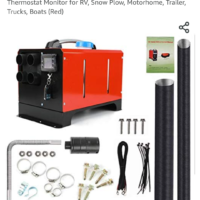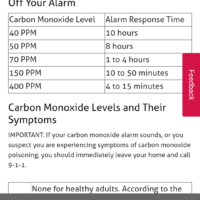One person says its fine to run a ventless heater and another says never do it…well which one is it? Is there a happy medium somewhere with the right amount of air flow etc?
It’s all up to your discretion and using common sense.
If you crank a heater on high in a small portable all buttoned up and banked…..you’re going to get a dose of CO. If you do it for hours, it could/will kill you (especially if you’re sleeping)
On the other hand, having the heater on low or medium with a vent or two open (and even cracking the bottom of the door on a calm night) is “safe” if you have a household CO detector.
You don’t need it to be 80 degrees in the shack to sleep. Bring a warm sleeping bag and use the heater to keep you from freezing.
Again, it’s all up to you.
If you want to be really safe, consider a vented diesel heater. More and more guys are putting them in their portables (mounting them right into the sled, and cutting an exhaust pipe through the sled)
They’re cheap, light, and from what I’ve heard very reliable. The only real negative is you need to bring a decent sized deep cycle along to keep the fan and fuel pump running, and the fuel pumps make a ticking sound when they’re pumping (some guys wrap the fuel pump in cloth to absorb sound)
I plan on putting one in our new Ice Castle as a backup/supplemental heat source.
They come in all sorts of sizes, here’s a 5kw for example.
One “KW” is equal to 3,400 BTU’s
Search diesel cab heaters and you will find a plethora of options. Some are combined units, other have the tank separate.
Attachments:

Screenshot_20210123-183802.png

